I’m sharing a tried-and-true method from my Louisiana roots that delivers crunchy, well-seasoned fried chicken every single time without overcomplicating it. As someone who juggles a million things and still wants home cooked meals on the table, I know how frustrating it is to try a recipe that doesn’t work or turns out bland. This seasoning hits just right, the crust stays crispy, and the process is simple enough to pull off even on a busy night.
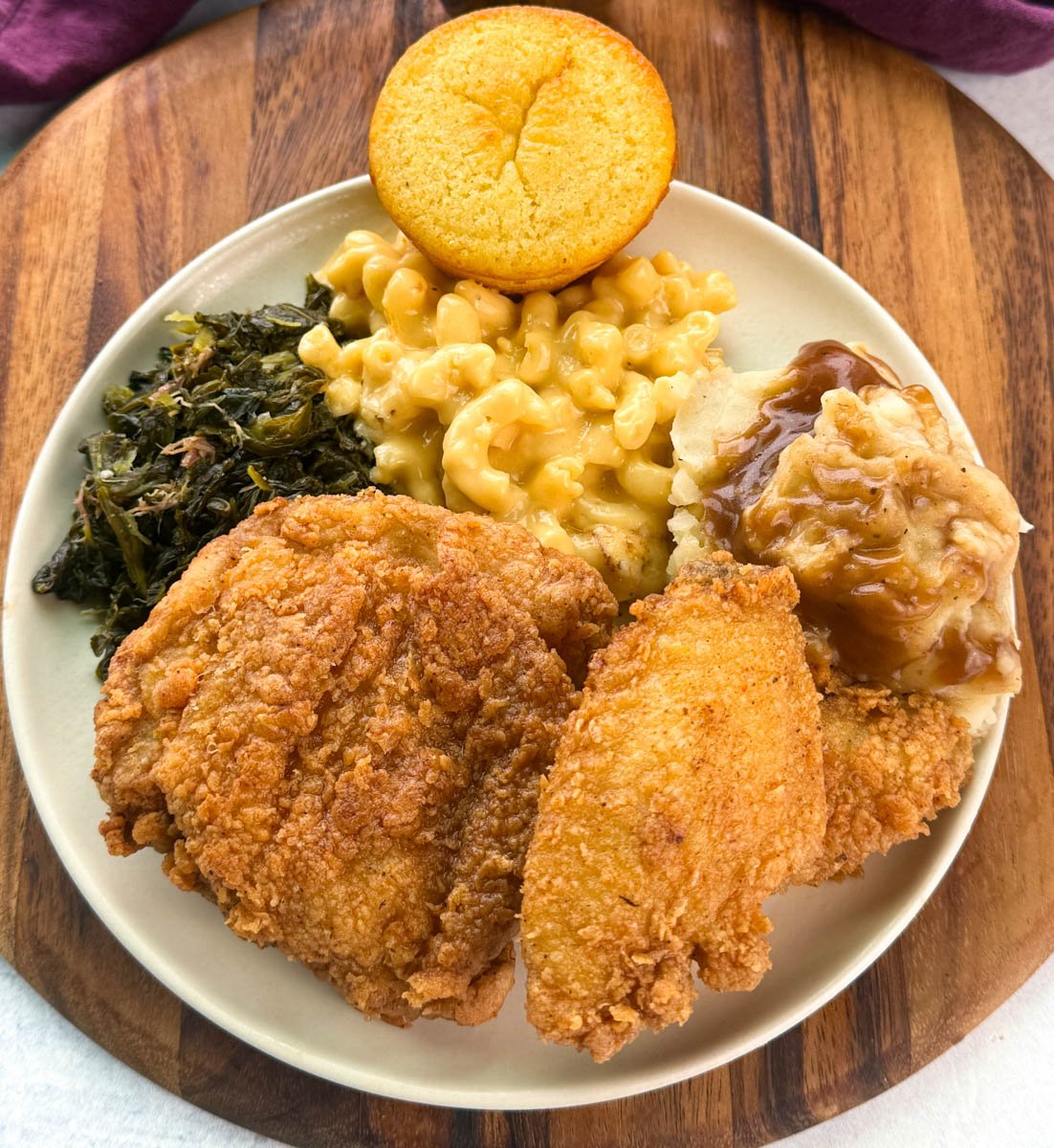
Want to save this recipe for later?
This recipe walks you through every step—so you can feel confident your fried chicken will turn out just the way it should.

Watch Brandi cook up this chicken here, or check out the full version on Youtube.
Fried Chicken Ingredients
- Chicken Pieces: The star of the show! Bone-in, skin-on chicken (like thighs, drumsticks, or breasts) stays juicy on the inside while developing a golden, crunchy crust on the outside. Use your favorite cuts of chicken. You can also use a whole chicken, cut up into pieces.
- Eggs: Eggs help bind the seasoned flour to the chicken, creating that thick, craggy crust we all love. They also add moisture and richness to the coating.
- Hot Sauce: It's optional and when mixed into the egg wash, hot sauce adds a subtle kick and layers of flavor that soak into the chicken before it’s breaded. For me, you can't have fried chicken without hot sauce! I drizzle or dip the chicken in it afterward, too!
- Creole Seasoning: This is my favorite way to season the chicken, but feel free to use any of your favorite chicken rubs, spice blends, or a mix of onion powder, garlic powder, and any of your favorite spices.
- Smoked Paprika: Whenever I cook just about anything, I have to use smoked paprika. It adds a hint of smokiness.
- Garlic Powder, Cayenne Pepper, Salt and Pepper
- All Purpose Flour: The base of the crispy coating. It forms that signature crust when fried and holds on to all the seasoning mixed in.
- Cooking Oil: A neutral oil like vegetable, canola, or peanut oil is best for frying.
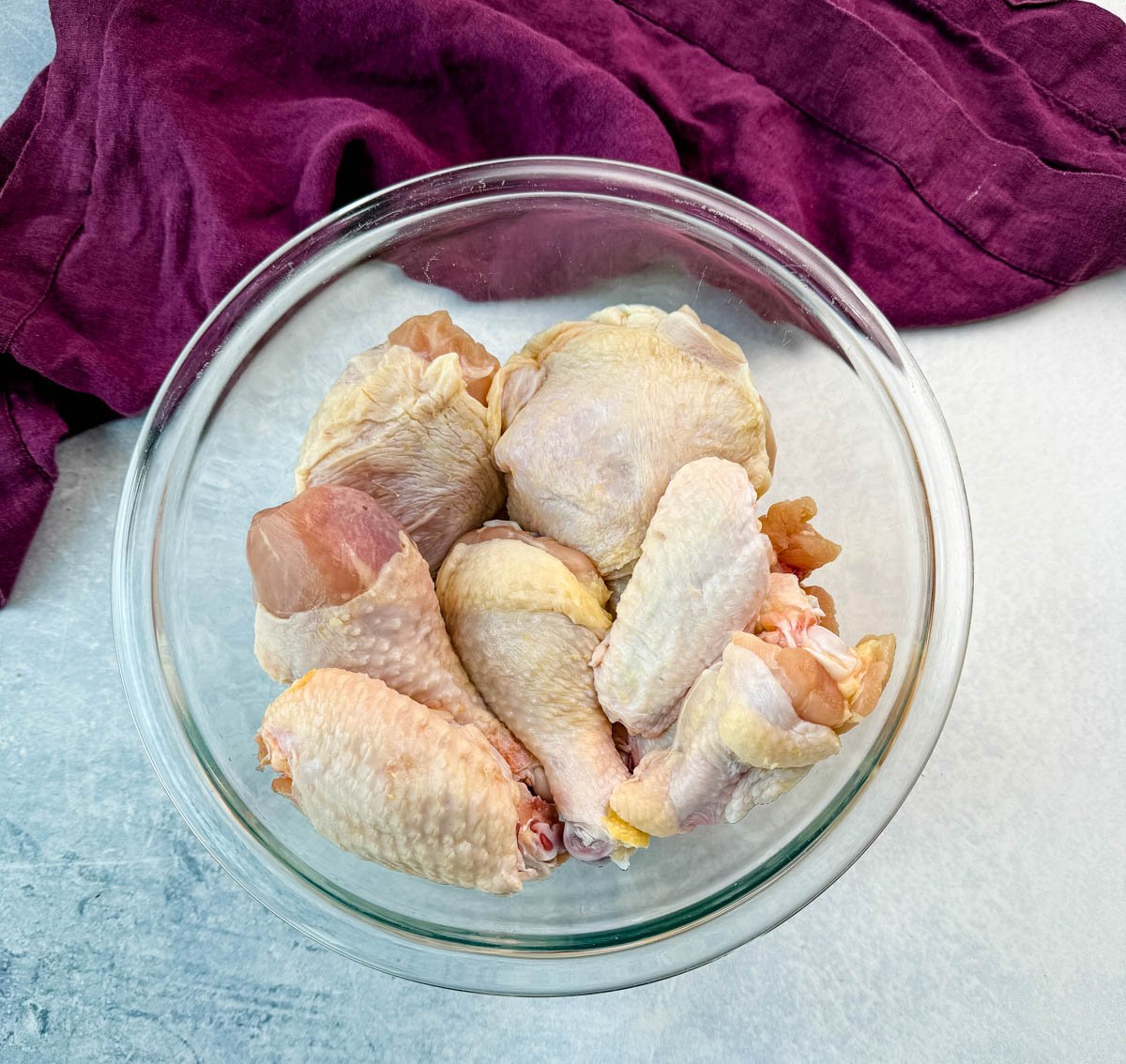
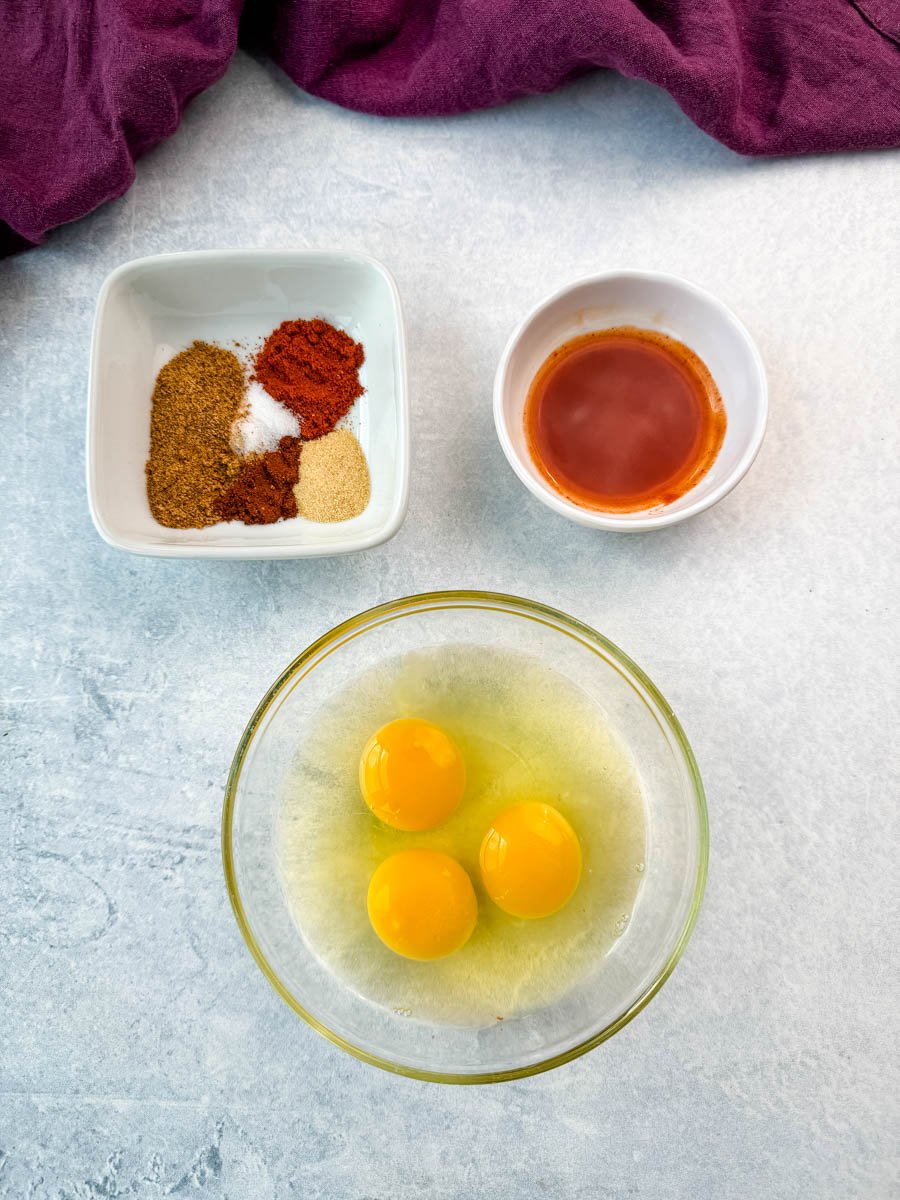
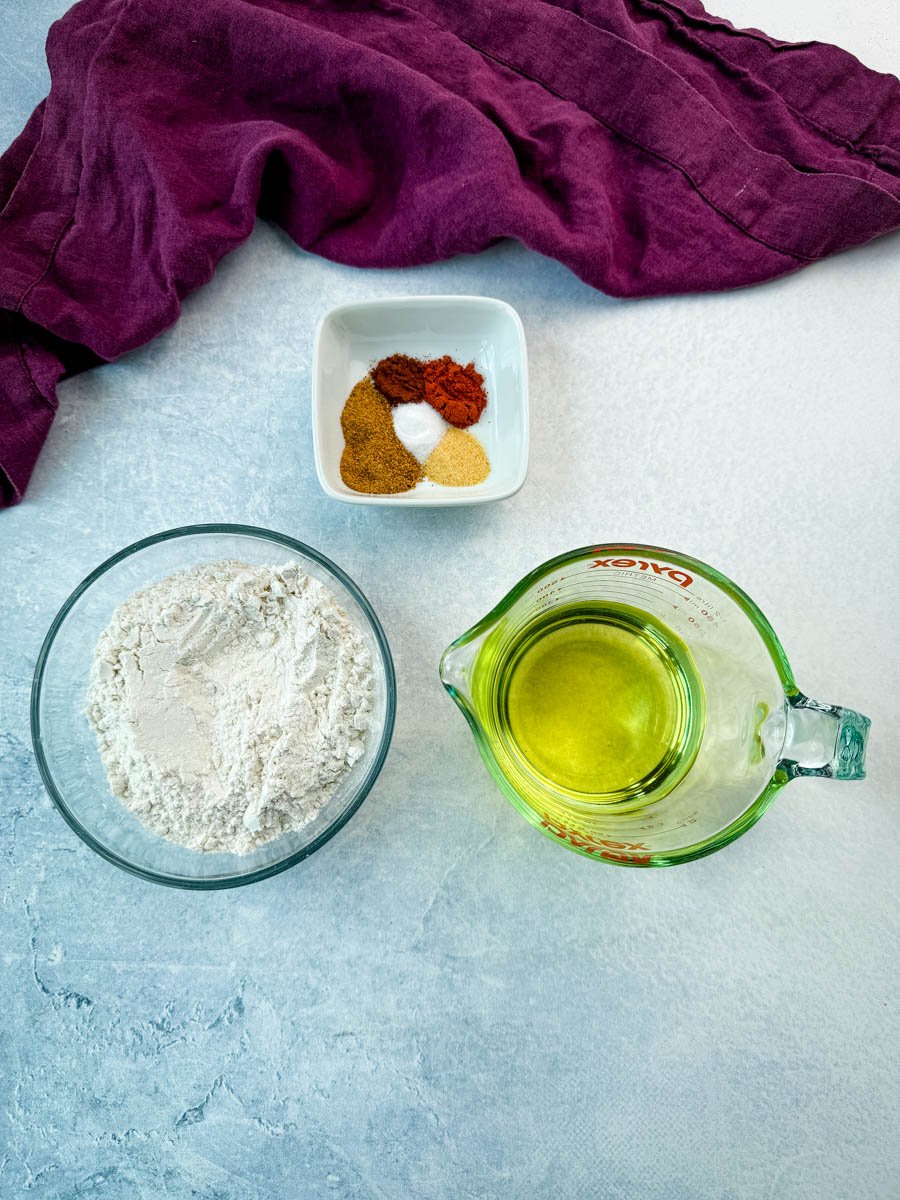
Why Isn't My Chicken Crispy?
Here are some common mistakes that will keep you from crispy fried chicken.
- The oil wasn’t hot enough. If the oil temperature is too low, the coating absorbs the oil instead of frying in it. Always heat your oil to at least 350 degrees and use a thermometer to keep it consistent between batches.
- You placed the fried chicken on paper towels. This is a common mistake! Instead, place it on a wire rack so air can circulate and keep it crispy. When you place the chicken on paper towels, there will be some oil spillover into the paper towels. As the chicken sits, this oil will penetrate and soften up the crust.
- You overcrowded the pan. Too many pieces in the skillet drops the oil temp fast and causes steaming instead of frying. Cook in batches and give each piece some space.
- The chicken wasn’t rested after breading. Letting your breaded chicken sit for 10–15 minutes before frying helps the coating stick and dry slightly. Skipping this step can lead to soggy or patchy breading.
- You covered the chicken after frying. Covering hot fried chicken traps steam and softens the crust.
- The breading was too wet. Make sure your egg wash or marinade isn’t overly runny, and don’t skip the flour dredge. A good dry coating is key to that signature crunch.
How to Make Southern Fried Chicken
Detailed measurements and full instructions can be found in the recipe card at the bottom of this post.
- Season the chicken. In a large bowl, season the chicken pieces with ½ tablespoon Creole seasoning, 1 teaspoon smoked paprika, 1 teaspoon garlic powder, cayenne pepper, salt, and pepper. Toss well to coat.
- Pour in the beaten eggs and hot sauce.
- Season the flour. In a plastic or paper bag, combine the flour with the remaining ½ tablespoon Creole seasoning, 1 teaspoon paprika, and 1 teaspoon garlic powder. This is where your crispy coating gets all its flavor. I use either a ziplock bag or a large paper bag. The flour should change color. If it's still white, in needs more seasoning and spices.
- Add the seasoned chicken to the bag and shake to fully coat the chicken in seasoned flour. Let the breaded chicken rest on a flat surface for 10–15 minutes—this helps the crust stick better when it hits the oil.
- Use a heavy bottomed pot or pan frying. Heat 1–2 inches of oil to 350 degrees. Use a thermometer to keep the temperature steady—it’s key for crispy, non-greasy chicken.
- Carefully add a few pieces at a time to avoid overcrowding. Fry large, bone-in pieces first and for about 12–15 minutes, turning occasionally, until golden brown and the internal temperature on the chicken reaches 165 degrees. Between batches, check the temperature of your oil and ensure it's at 350 degrees before frying the next batch. Small bone-in pieces like wings and drumettes will fry in 7-10 minutes.
- Transfer the fried chicken to a wire rack set over a baking sheet. Let it rest for a few minutes to cool and crisp up. Avoid paper towels—they trap steam and soften the crust.
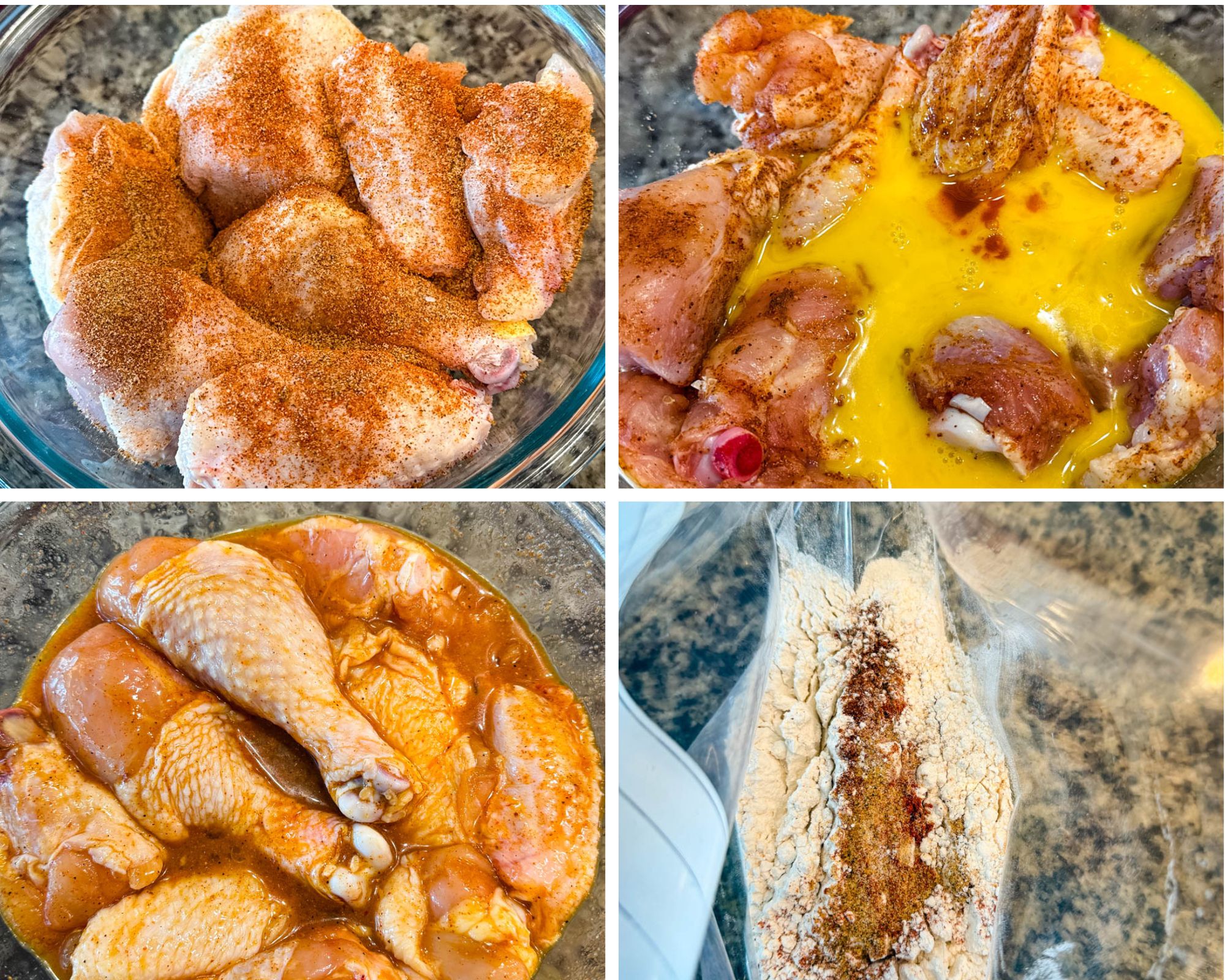
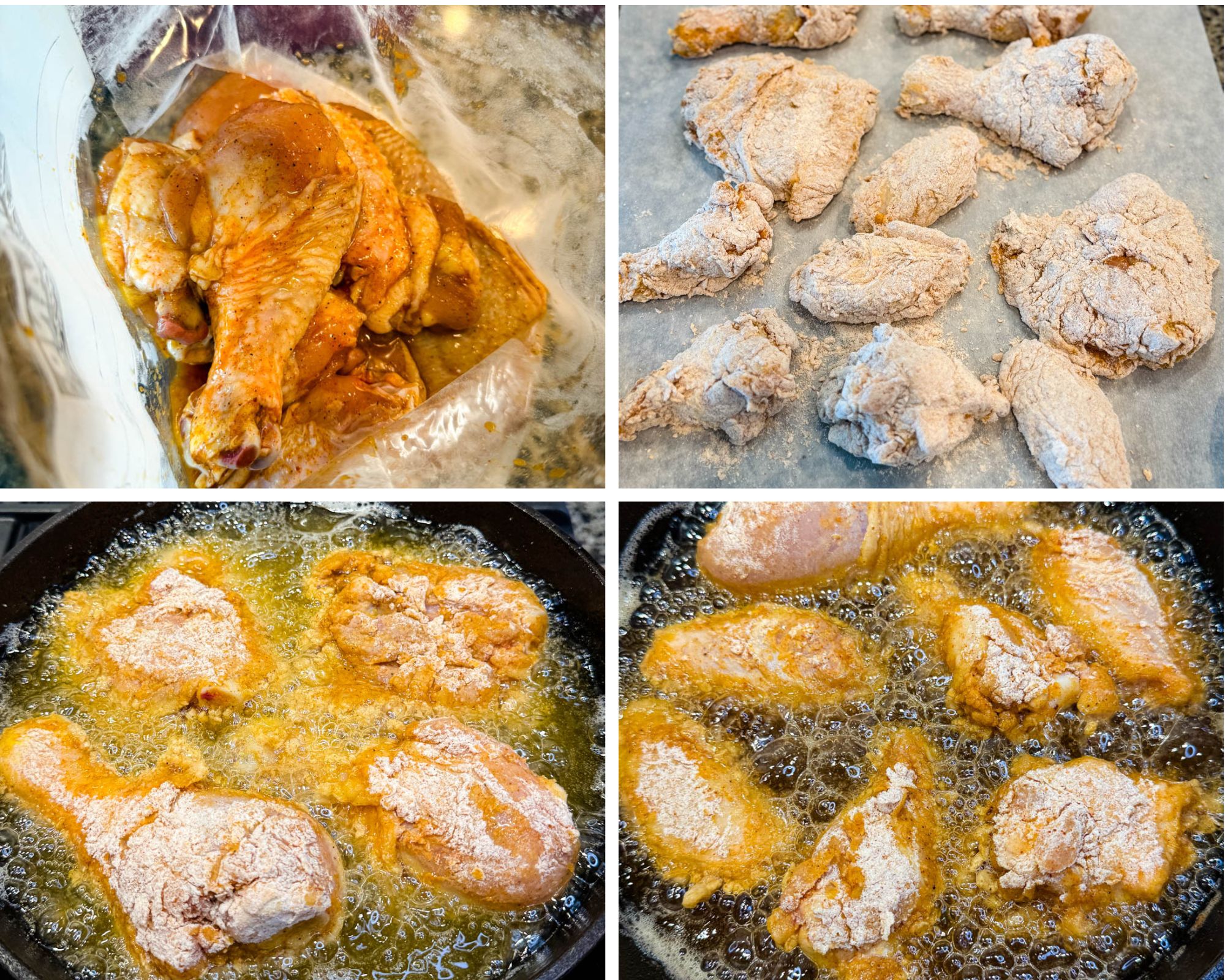
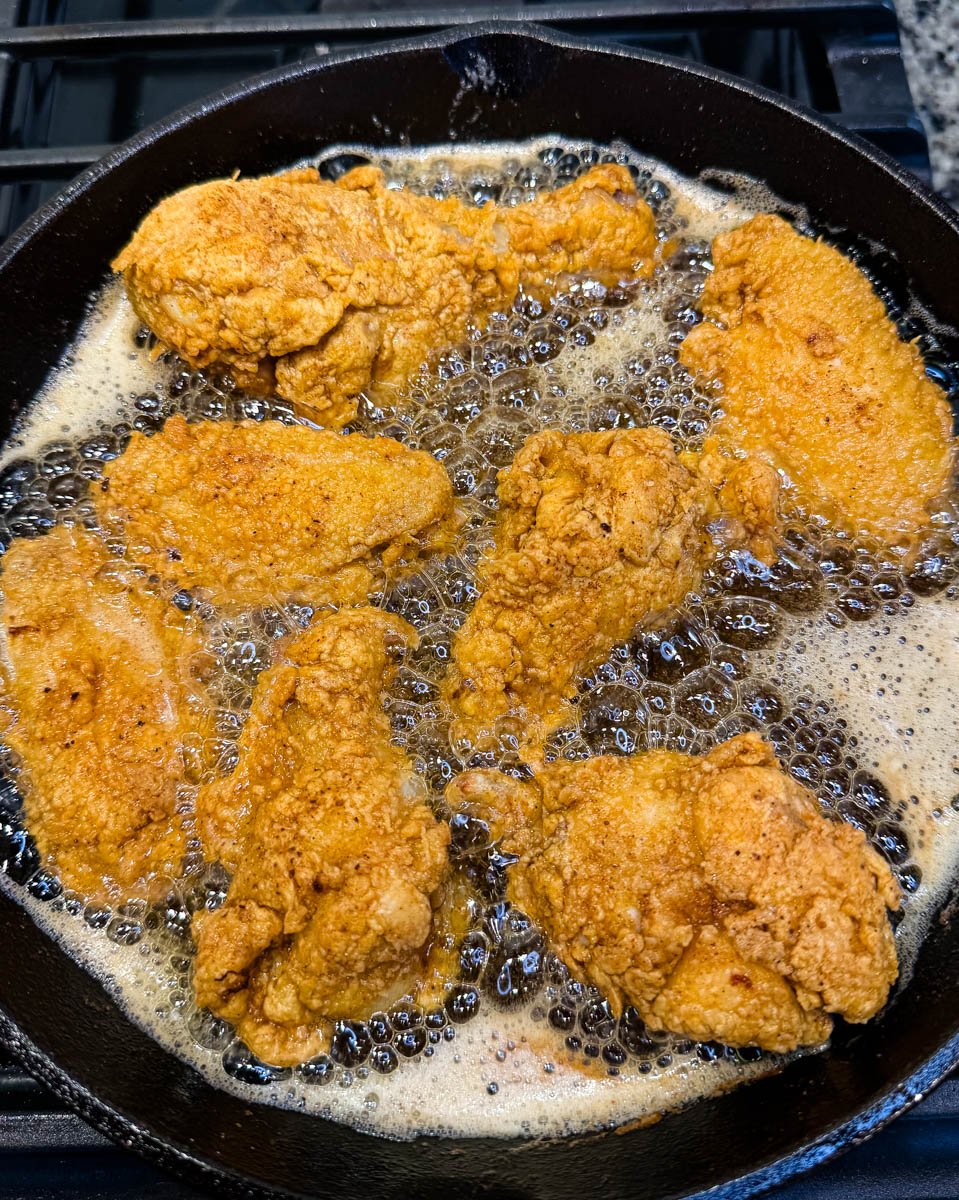
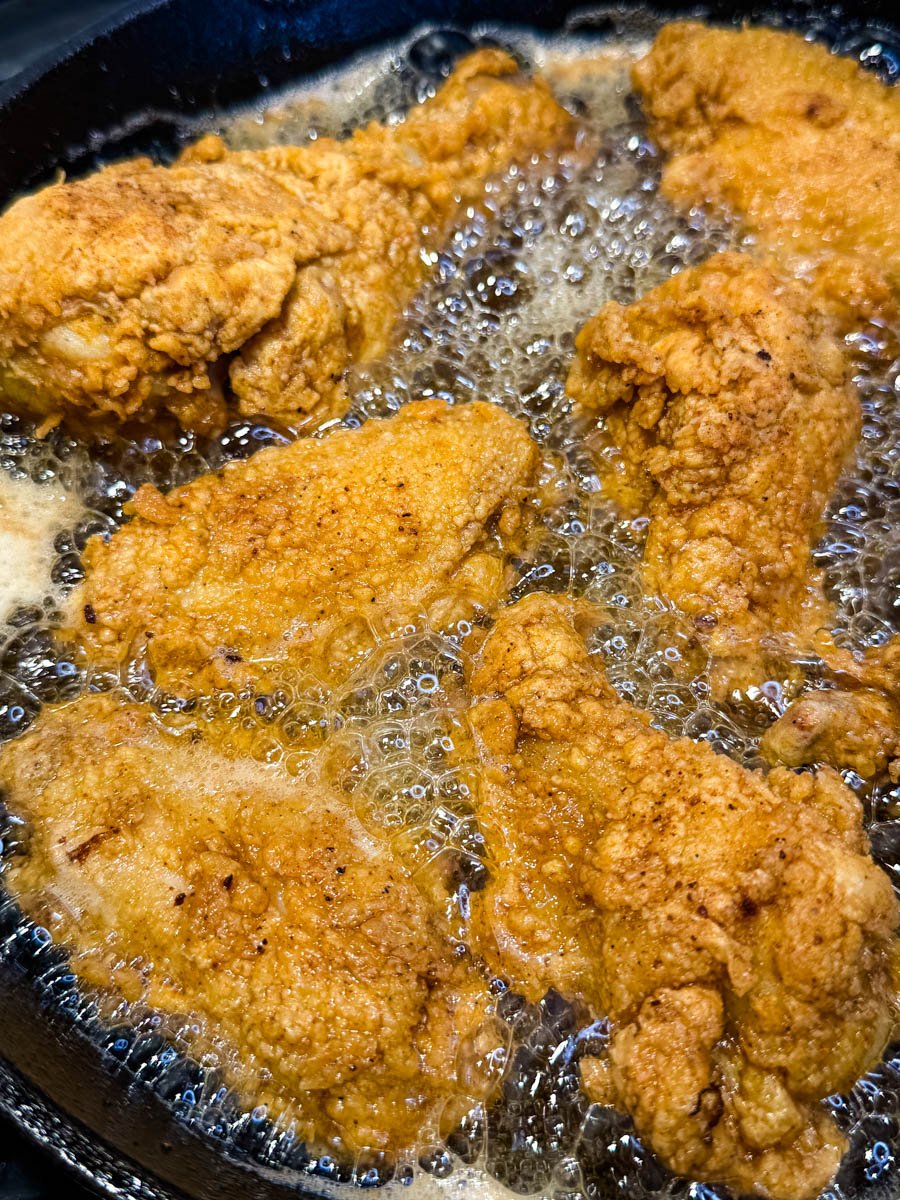
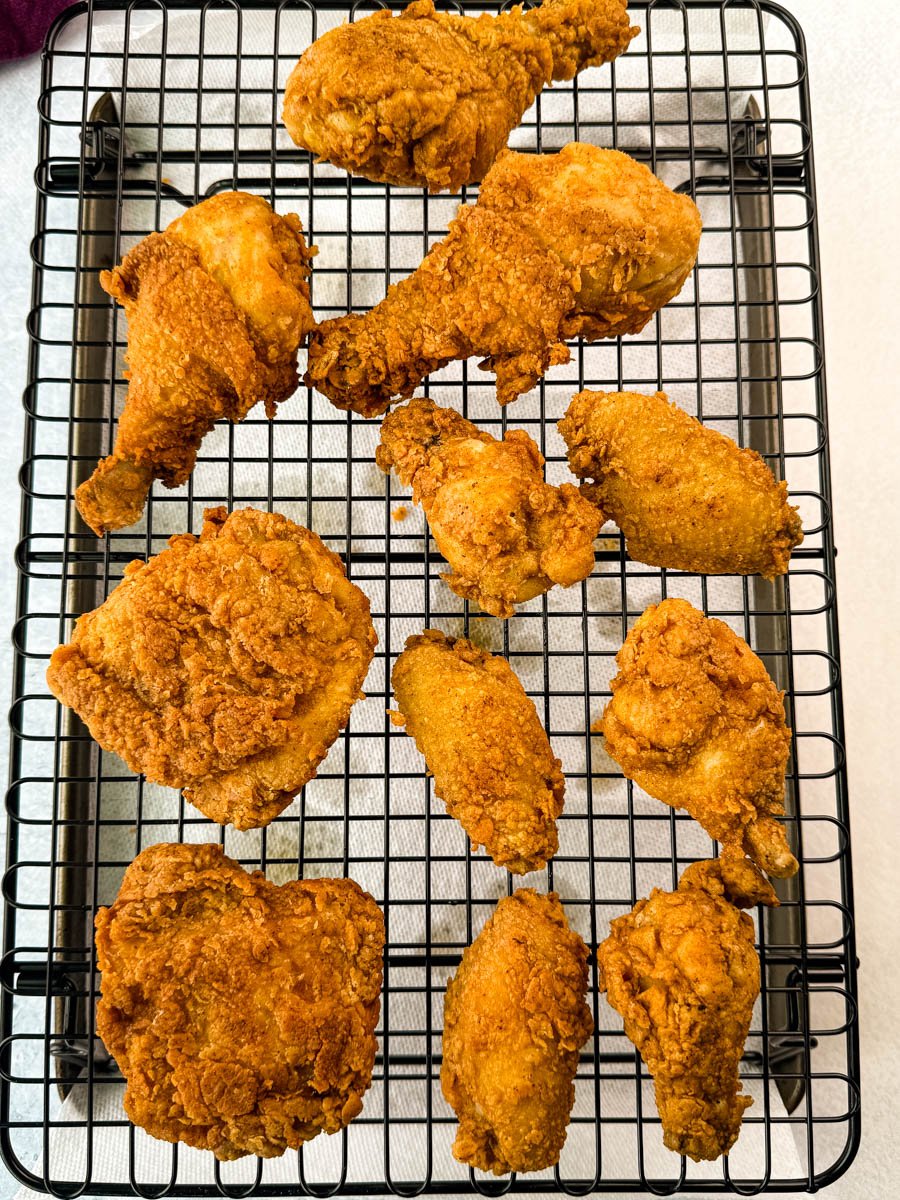

Southern Fried Chicken Recipe
Want to save this recipe for later?
Equipment
Ingredients
- 2-3 pounds pieces of chicken
- 3 eggs Beaten
- 1-2 teaspoons hot sauce Optional for spicy.
- 1 tablespoon Creole Seasoning Divided into 2 portions of ½ tablespoon each.
- 2 teaspoons smoked paprika Divided into 2 portions of 1 teaspoon each.
- 2 teaspoons garlic powder Divided into 2 portions of 1 teaspoon each.
- ½-1 teaspoon cayenne pepper Optional for spicy.
- salt and pepper to taste
- 1 ½ cups all-purpose flour
- cooking oil 1-2 inches in the bottom of the pan.
Instructions
- Season the chicken. In a large bowl, season the chicken pieces with ½ tablespoon Creole seasoning, 1 teaspoon smoked paprika, 1 teaspoon garlic powder, cayenne pepper, salt, and pepper. Toss well to coat.
- Pour in the beaten eggs and hot sauce. Stir well to fully coat the chicken.
- Season the flour. In a plastic or paper bag, combine the flour with the remaining ½ tablespoon Creole seasoning, 1 teaspoon paprika, 1 teaspoon garlic powder, salt, and pepper. This is where your crispy coating gets all its flavor. I use either a ziplock bag or a large paper bag. The flour should change color. If it's still white, it needs more seasoning and spices.
- Add the seasoned chicken to the bag and shake to fully coat the chicken in seasoned flour. Remove the chicken from the bag and let the breaded chicken rest on a flat surface for 10–15 minutes—this helps the crust stick better when it hits the oil.
- Use a heavy bottomed pot or pan frying at medium heat on the stove. Heat 1–2 inches of oil to 350 degrees. Use a thermometer to keep the temperature steady—it’s key for crispy, non-greasy chicken.
- Carefully add a few pieces at a time to avoid overcrowding. Fry large, bone-in pieces first and for about 12–15 minutes, turning occasionally, until golden brown and the internal temperature on the chicken reaches 165 degrees. Between batches, check the temperature of your oil and ensure it's at 350 degrees before frying the next batch. Small bone-in pieces like wings and drumettes will fry in 7-10 minutes.
- Transfer the fried chicken to a wire rack set over a baking sheet. Let it rest for a few minutes to cool and crisp up. Avoid paper towels—they trap steam and soften the crust.
Air Fryer Instructions
- Spray the air fryer basket with cooking oil.Spray or brush both sides of the breaded chicken with a light coating of oil (like avocado or olive oil). This is key to getting that golden, crispy crust in the air fryer.
- Place the chicken in the air fryer basket in one layer with space between each piece. Don’t overcrowd—it needs air to circulate and crisp up.
- Air fry at 400 degrees: Bone-in pieces: 22–26 minutes and Boneless pieces or wings: 12–16 minutes.Flip halfway through cooking and spray again lightly with oil to ensure even browning.
Notes
How to Know Breaded Chicken Is Ready to Fry
- The coating is fully set (not wet or sliding off): After dredging the chicken in flour, egg wash, and seasoned flour or breadcrumbs, let it rest for 10–15 minutes. This helps the breading adhere better and prevents it from falling off in the oil.
- The breading looks dry and slightly tacky: It shouldn't look wet or soggy. If it does, it needs more time to sit so the coating can bond to the chicken.
- The surface feels firm when touched gently: Give it a light tap—if it feels soft or mushy, let it rest longer. If it feels set and slightly crisp to the touch, you're good to go.
Nutrition
Nutrition Data
Macros are provided as a courtesy and should not be construed as a guarantee. This information is calculated using MyFitnessPal.com. To obtain the most accurate nutritional information in a given recipe, you should calculate the nutritional information with the actual ingredients used in your recipe, using your preferred nutrition calculator. You are solely responsible for ensuring that any nutritional information provided is accurate, complete, and useful.
What Type of Pan to Use for Frying
A cast iron skillet is my top choice and it what my family has always used. It's also a staple when you're making black folks fried chicken. Cast iron holds heat evenly and stays hot, which is exactly what you need for crispy, golden chicken. Bonus: It gives the crust a beautiful sear and can handle high temps without warping.
How to Avoid Greasy Chicken
- Keep your oil hot (but not too hot). If the chicken is greasy, the oil may be too cool. If it's too cool, the breading will soak it up like a sponge. If it’s too hot, the outside burns before the inside cooks.
- Always let it return to the right temperature between batches and avoid overcrowding the pan. I use a thermometer to cook while I'm frying and in between batches. I adjust the heat on the stove as necessary.
- Skip the paper towels. They trap steam and make the crust soggy. Use a wire rack over a baking sheet to let excess oil drip off without ruining the texture.
- Stick with neutral, high-smoke-point oils like peanut, canola, or vegetable oil. Butter or olive oil burns too quickly and leaves a heavy taste.

How to Know Breaded Chicken Is Ready to Fry
- The coating is fully set (not wet or sliding off): After dredging the chicken in flour, egg wash, and seasoned flour or breadcrumbs, let it rest for 10–15 minutes. This helps the breading adhere better and prevents it from falling off in the oil.
- The breading looks dry and slightly tacky: It shouldn't look wet or soggy. If it does, it needs more time to sit so the coating can bond to the chicken.
- The surface feels firm when touched gently: Give it a light tap—if it feels soft or mushy, let it rest longer. If it feels set and slightly crisp to the touch, you're good to go.
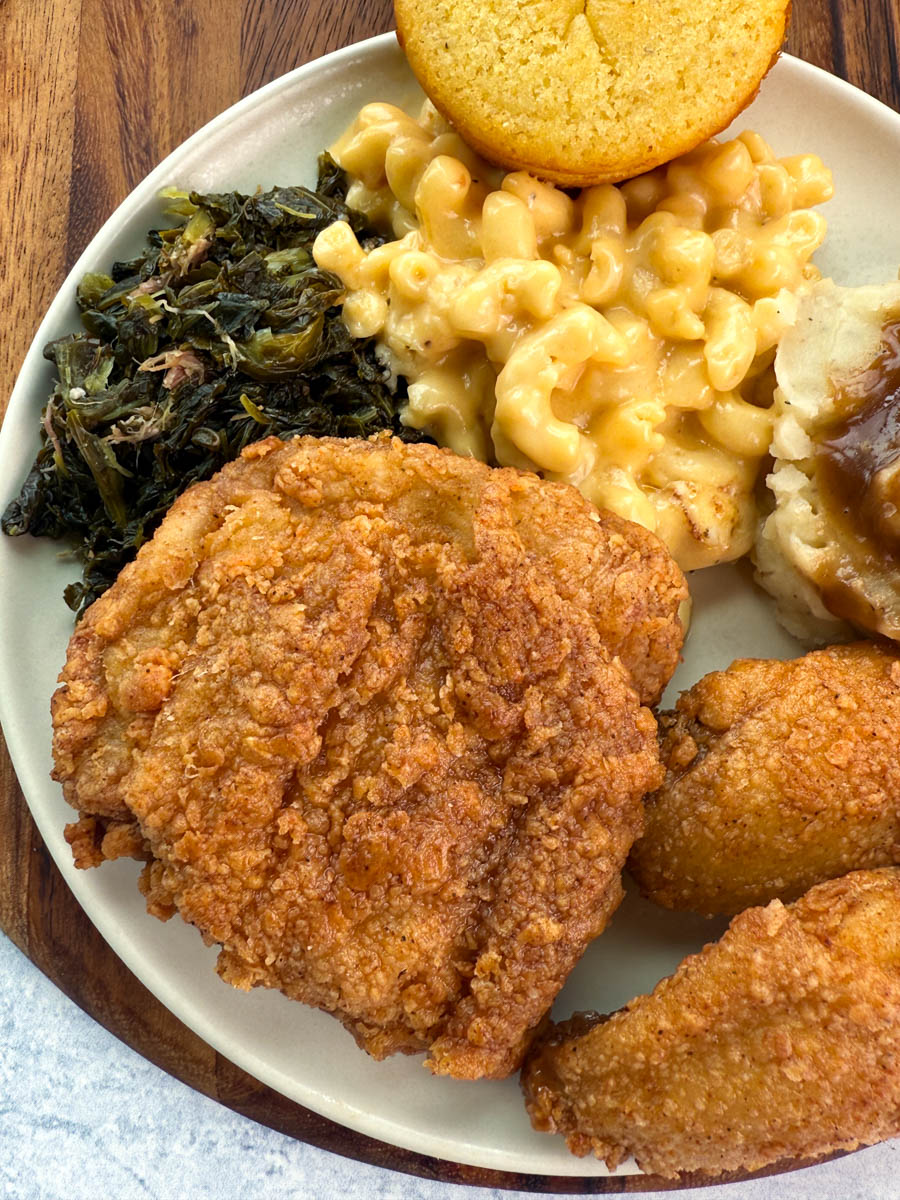
Frequently Asked Questions and Pro Tips
Use a neutral oil with a high smoke point like vegetable oil, peanut oil, or canola oil.
Aim for 350 to 375 degrees. Too low and the chicken gets greasy, too high and the outside burns before the inside cooks through.
Let the breaded chicken rest for 10–15 minutes before frying. This helps the coating stick better.
Bone-in pieces typically fry for 12–15 minutes, depending on size. Always check for an internal temperature of 165°F.
Yes! Boneless thighs or breasts work well and cook faster—around 6–8 minutes, depending on thickness.
It's optional, but recommended! I love classic buttermilk fried chicken, it takes a little more time than this method, but it's worth it. You can drench the chicken in buttermilk, cover, and store it in the fridge for a couple of hours to overnight. This will tenderize the chicken and make it so tender and juicy.
If you want! I discard it. My grandmother would hate to hear me say that! She kept leftover grease and bacon fat in Crisco cans by the stove. Strain it and store in a sealed container.
Nope! A heavy-bottomed skillet or Dutch oven works great—just use a thermometer to monitor the oil temp.
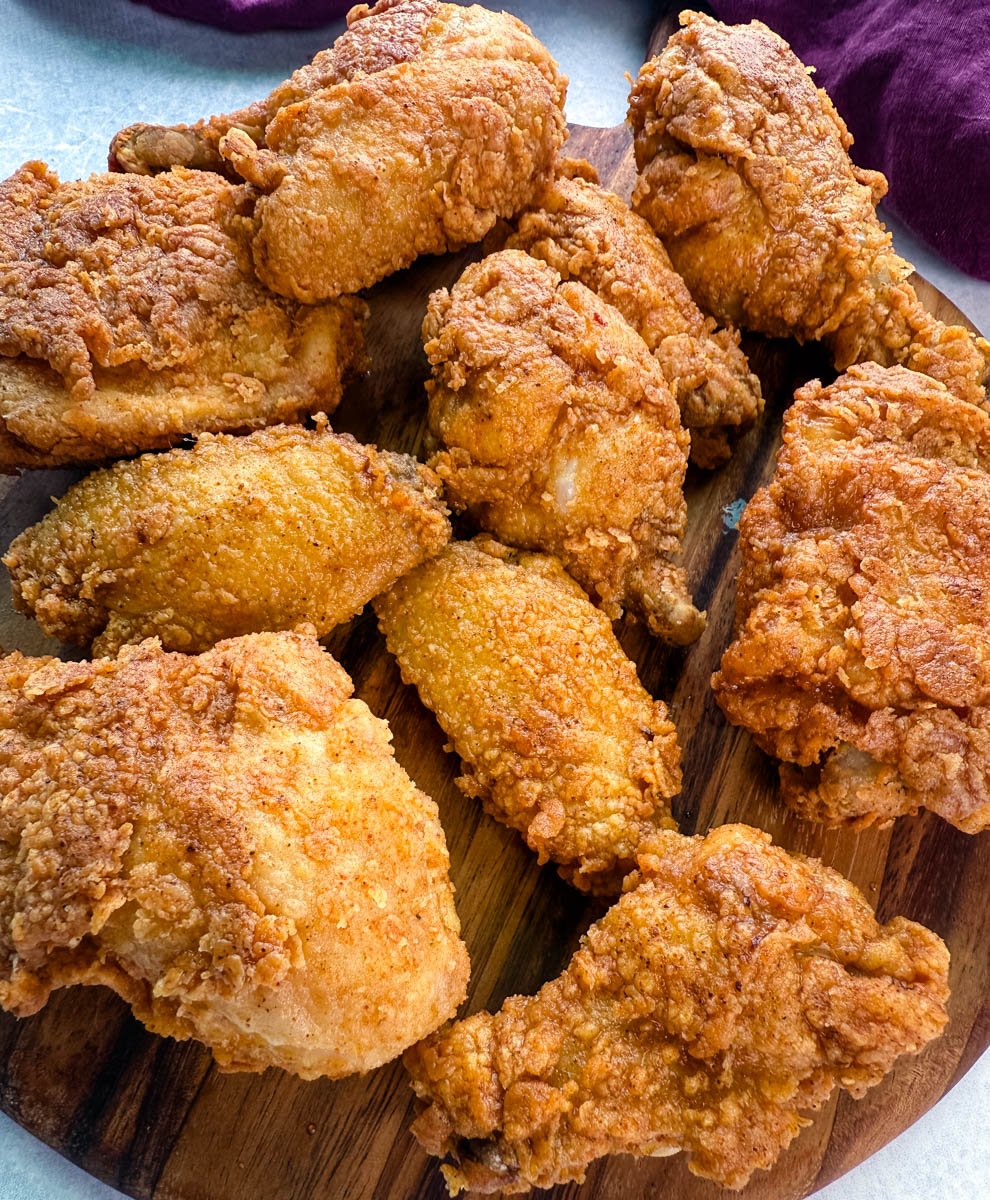
How to Store
Let it cool completely. Don’t store it while it’s still warm! Trapped steam is the enemy of crispiness. Let the chicken rest on a wire rack until it’s completely cooled. Store it tightly covered and sealed. Keep the container in the refrigerator for up to 3–4 days. The chicken will lose some crispiness, but it’ll still taste great when reheated the right way.
How to Reheat
Oven: Preheat your oven to 375 degrees place the chicken on a wire rack over a baking sheet, and bake for 10–15 minutes until heated through and crispy again.
Air Fryer: Reheat at 350 degrees until warm and crispy.
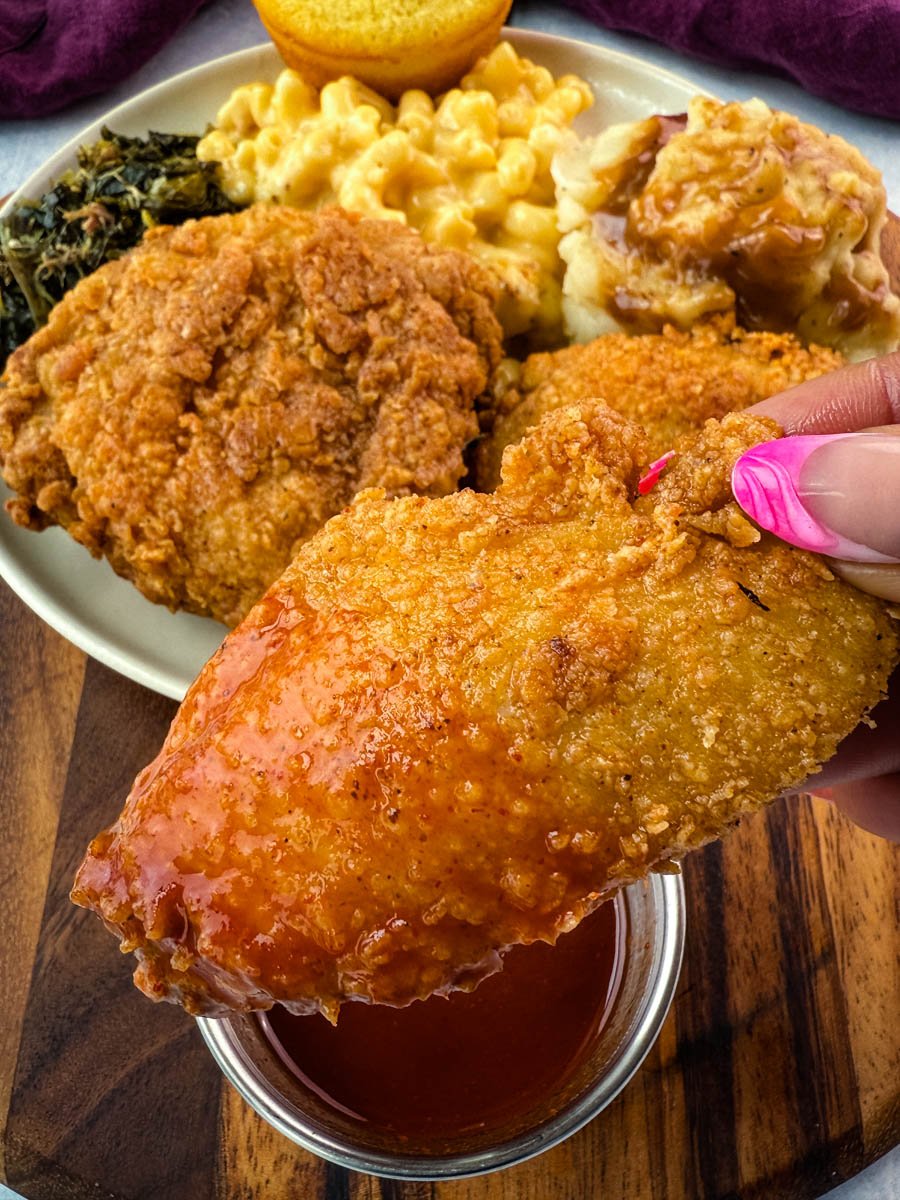
Pair With These Classic Southern Recipes
Southern Candied Sweet Potatoes
Southern Cooked Cabbage
Southern Collard Greens
Southern Soul Food Baked Mac and Cheese
Beef Neck Bones
Southern Fried Shrimp
Crispy Fried Okra
Sauteed Collard Greens

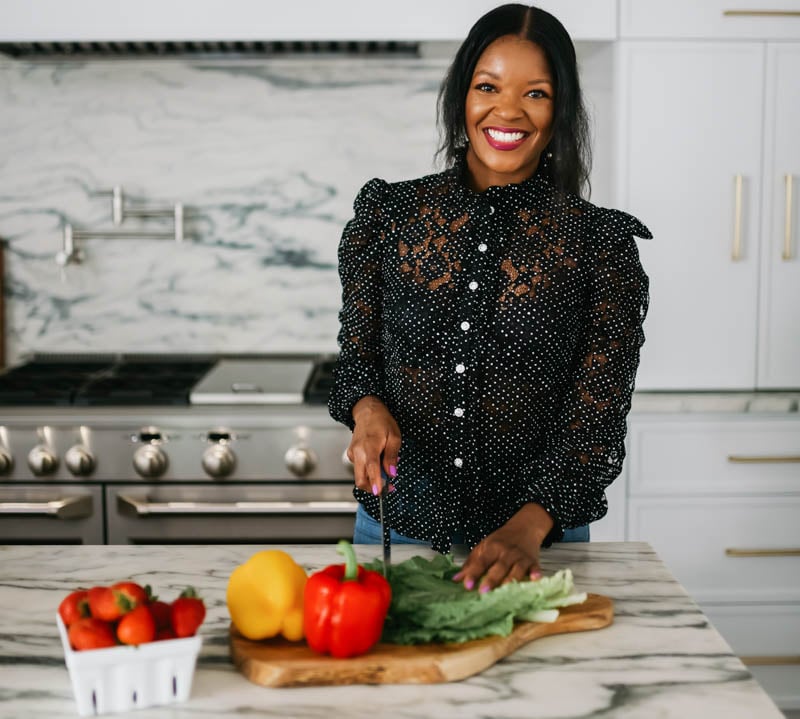
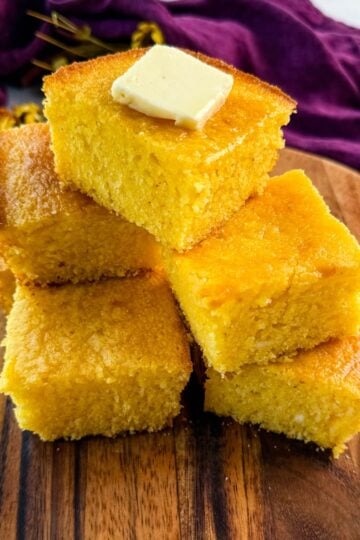
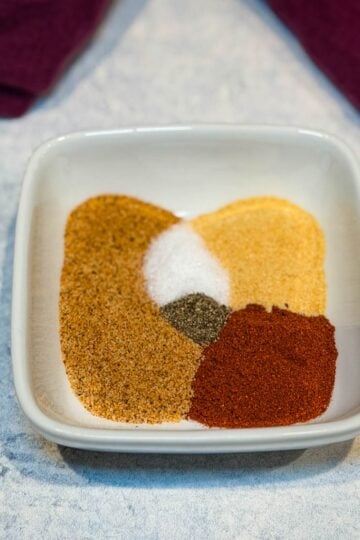
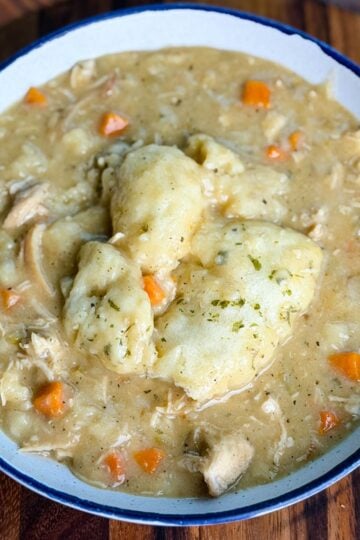
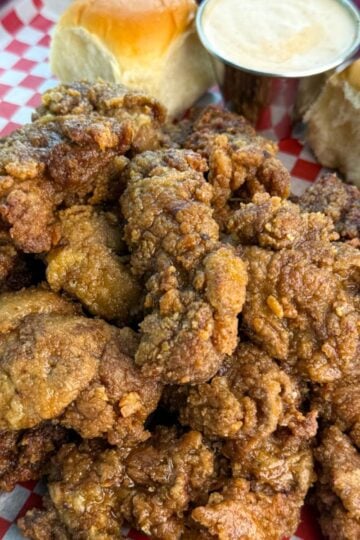
Katie says
I tried your air fryer version years ago, so I knew this would be good! I'm happy I have deep fried and air fry now. I used all of your notes and this was so good.
staysnatched says
Wonderful! I'm glad you enjoyed it.
Renee says
Just made this yesterday, it was amazing and the most crispy wings I ever made. Thanks so much! I have used several of your recipes and neglected to leave feedback. They were all great. 😊
staysnatched says
Wonderful! I’m so glad to hear you’re enjoying the recipes.
Deb says
I have never had very good luck at fried chicken. It never turns out very crispy. This recipe is the absolute best. It was easy to make and the tips were so helpful. Highly recommend. This is in my favorite recipe pile that’s for sure.
staysnatched says
Yay! I'm so glad you enjoyed the recipe.
Tracey says
Perfect!